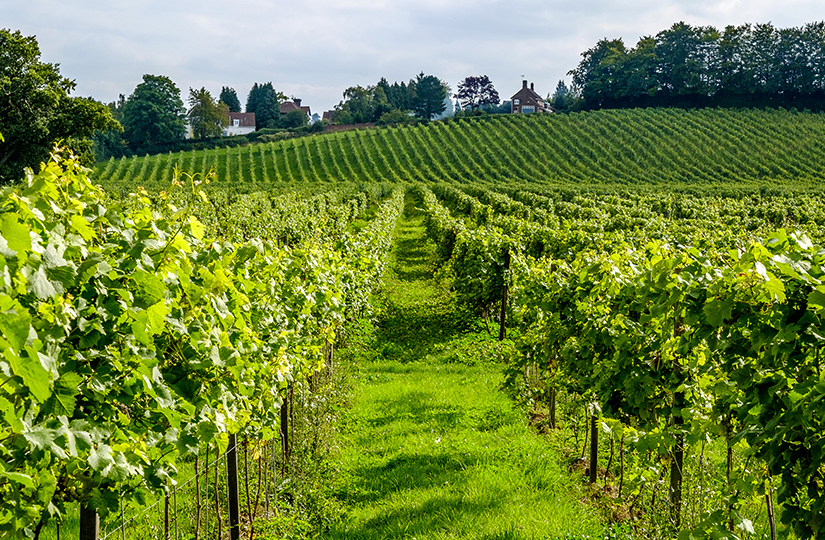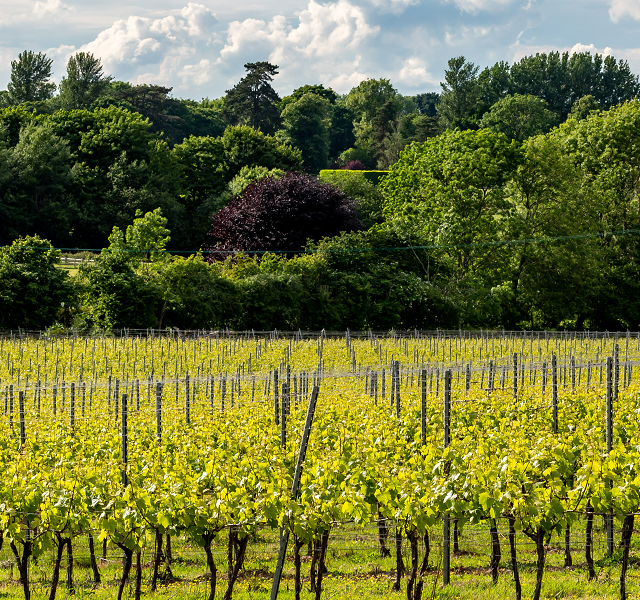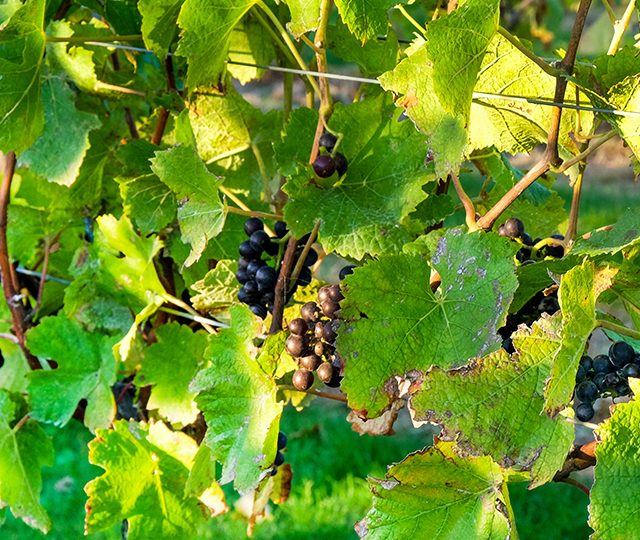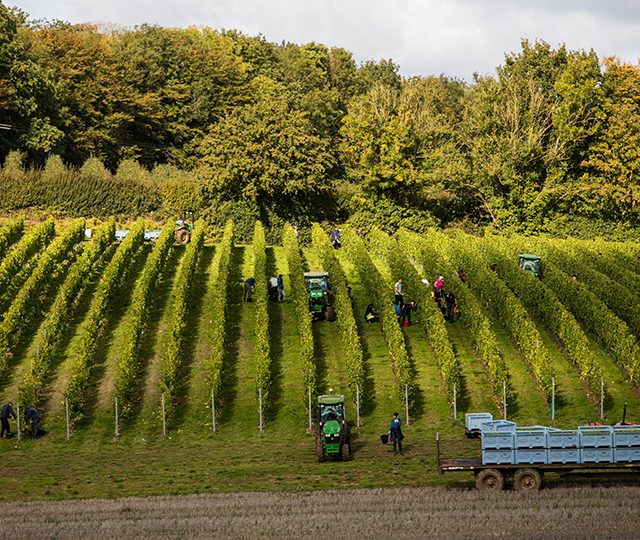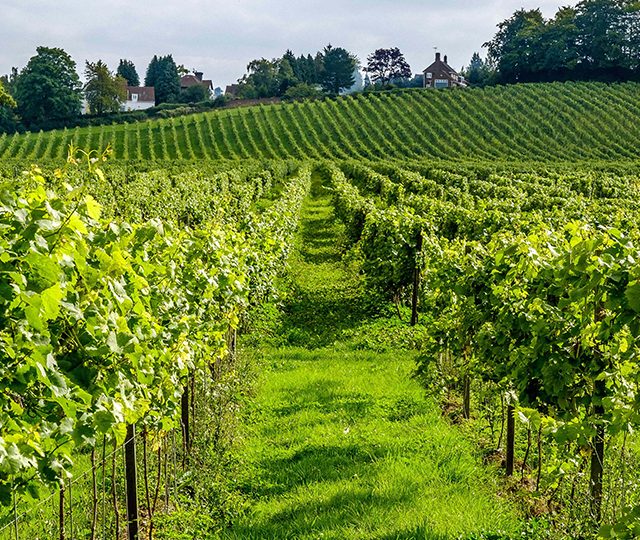Demand for UK vineyard land shows no sign of slowing
Demand for UK vineyard land shows no sign of slowing
The growth in the UK wine sector in recent years has been nothing short of astonishing, with vineyards and land suitable for vines attracting premium prices as a result.
According to the trade body WineGB, there are now about 800 vineyards in the UK and there has been a 70% increase in the area under vines in the past five years.
Twenty years ago, UK winemakers were making 1-2m bottles of wine a year, but in 2020 there were 8.7m bottles produced, with industry forecasts suggesting this figure could rise to 40m by 2040.
UK vineyards are also now producing wines, particularly sparkling ones, that are more than a match for those produced in the Old-World wine-growing regions of Europe. At the 2021 Decanter World Wine Awards, UK-made wines picked up one best in show medal – just one of just 50 awarded globally – plus two platinum, nine gold, 81 silver and 51 bronze medals.
Though the Covid-19 pandemic took its toll on the sector, with revenues hit as businesses were forced to close their doors to visitors and tourists, many businesses showed remarkable resilience and several UK wine producers even reported a surge in sales during the worst of the pandemic, as people being stuck at home sought out new drinks experiences.
Value of land suitable for vines
This boom in UK wine has translated to strong demand for land suitable for planting vines and there is no sign of this letting up.
We continue to get enquiries from people who are keen to start a new venture – some looking for just a couple of acres so they can start winemaking as a hobby, but other operators with a strong commercial focus looking for sites of 20-30 acres or more.
The best sites are found on free draining, gentle south-facing slopes that aren’t exposed to strong winds or late frost, are less than 100m above sea level, and where average temperatures and sunshine hours are highest. Poor sites make it hard to achieve commercially viable yields with consistency. Many buyers will also consider other factors such as the look and feel of the place, accessibility, and the potential to develop facilities which can maximise cellar door sales and capitalise on growth in UK wine tourism.
Only a small proportion of the land which comes to the open market each year will be suitable for planting with vines, so most vineyard land must be proactively sought out and purchased privately. As such, any potential buyer tends to need to offer a premium to persuade a reluctant vendor to sell. This means that, while most arable land in the UK sells for between £8,000 and £10,000/acre, ground suitable for vineyard planting often sells for £15,000-25,000/acre.
The highest prices are seen in the hotspot areas of East and West Sussex, Kent, parts of Surrey and East Hampshire. But buyers are prepared to look further afield and so there is also demand in the South West and East of England. Indeed, Suffolk is arguably one of the best counties for production potential because it has a predominance of the right soil type and a suitable climate. Recent figures show that the vineyard area in East Anglia has increased by just over 400% in four years.
Value of existing vineyards
The number of existing vineyards sold each year is small with again most transactions off-market. The best vineyards can reach £30,000-35,000/planted acre, if it is well-planted, on the right site and with the right vines.
While a purchase price of £30,000-35,000/planted acre sounds high, it reflects the high capital cost and risks associated with buying the land, establishing the vines and managing them to the point of full production. It normally takes vines five years to reach full productivity.
The value of a planted vineyard will reflect the value of the bare land, the adjusted costs of establishing the vines and a margin to account for the grower’s risk in establishing the vineyard.
The cost of establishment has typically been around £12,000 – £15,000/acre, but this will be adjusted to account for a range of factors. For example, a vendor can expect to achieve the greatest value where the vines have proved themselves over a good couple of harvests, but still have plenty of life left in them.
Discounts to the cost of establishment should be expected if the vines are yet to reach maturity, make an unpopular wine, or are near the end of their life. If a vineyard is planted in an unsuitable way, it can lead to even bigger discounts to account for the purchaser’s costs if they need to take the vines out and replant.
Letting vineyards
A more recent market development is evidence that there is a strong lettings market for good quality, proven and established vineyards. We have just completed the letting of a small, established, champagne trio vineyard in the prime of its production for £1,850/acre. Demand was strong and the successful applicant is an established producer with a great reputation. Happy client, happy producer. We believe this is the first market letting of an established and productive vineyard.
Nick Watson leads Strutt & Parker’s viticulture group. The company is expert in identifying land suitable for vines through purchases, long leases and joint venture agreements. It also specialises in planning, development and project management of buildings in the countryside, including wineries and visitor centres.
